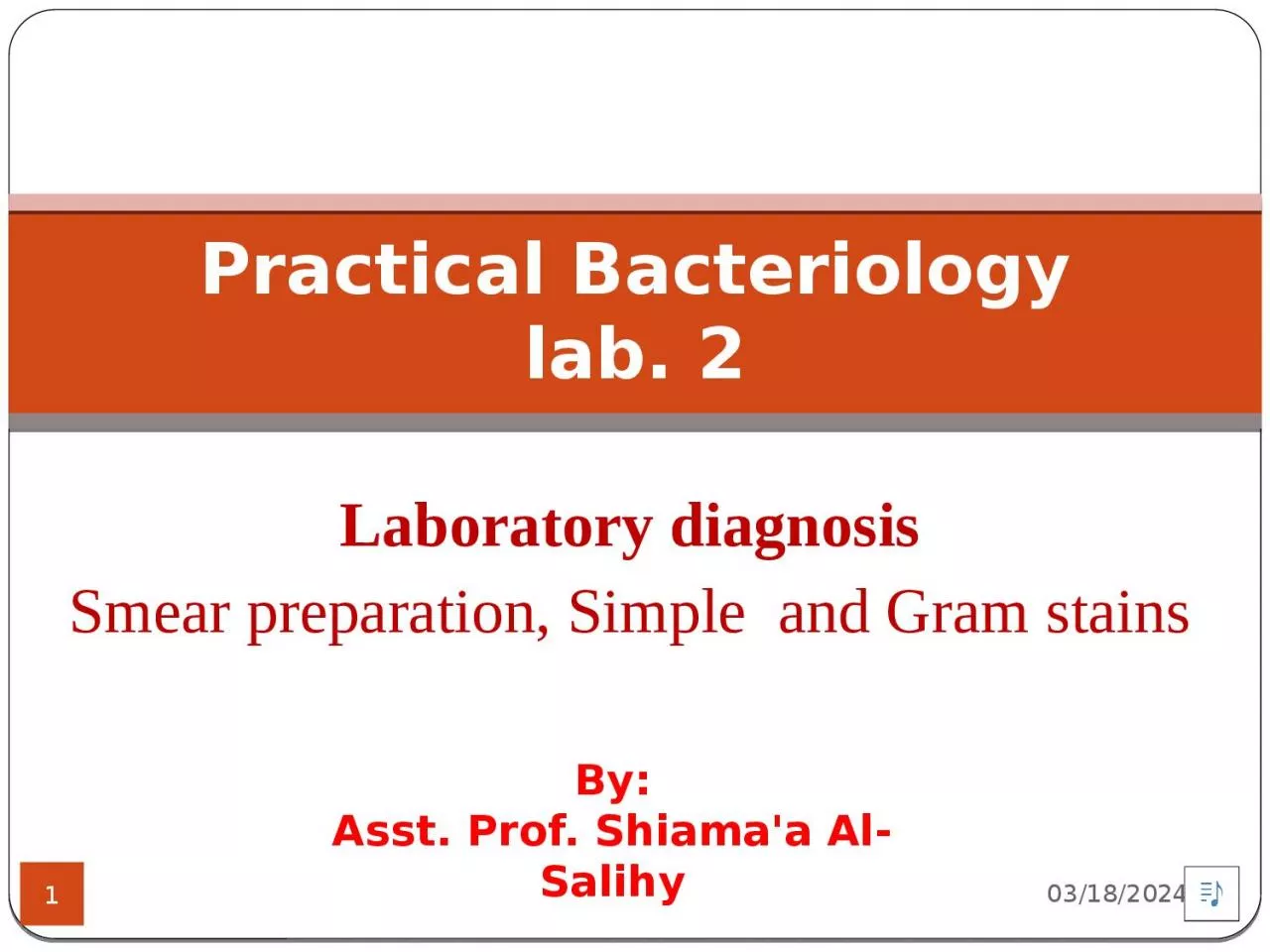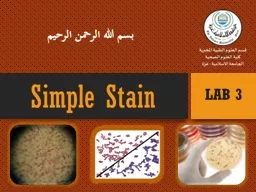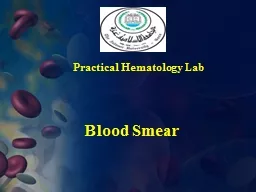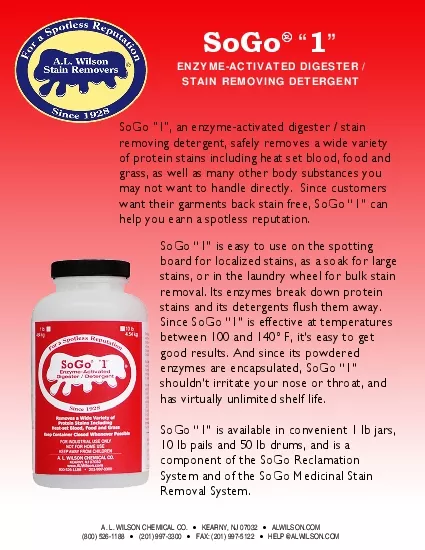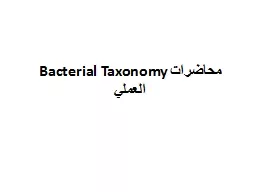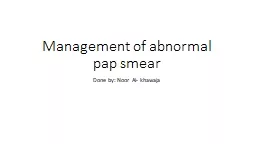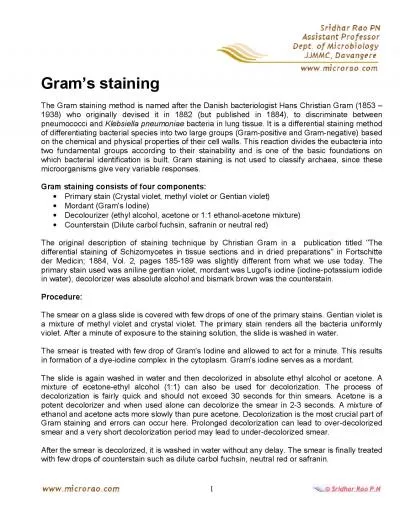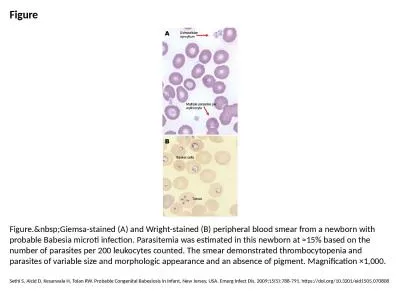PPT-Laboratory diagnosis Smear preparation, Simple and Gram stains
Author : jones | Published Date : 2024-03-13
5292023 1 Practical Bacteriology lab 2 By Asst Prof Shiamaa AlSalihy Learning objectives 5292023 2 After this lab you must be able to Identify laboratory diagnosis
Presentation Embed Code
Download Presentation
Download Presentation The PPT/PDF document "Laboratory diagnosis Smear preparation, ..." is the property of its rightful owner. Permission is granted to download and print the materials on this website for personal, non-commercial use only, and to display it on your personal computer provided you do not modify the materials and that you retain all copyright notices contained in the materials. By downloading content from our website, you accept the terms of this agreement.
Laboratory diagnosis Smear preparation, Simple and Gram stains: Transcript
Download Rules Of Document
"Laboratory diagnosis Smear preparation, Simple and Gram stains"The content belongs to its owner. You may download and print it for personal use, without modification, and keep all copyright notices. By downloading, you agree to these terms.
Related Documents

